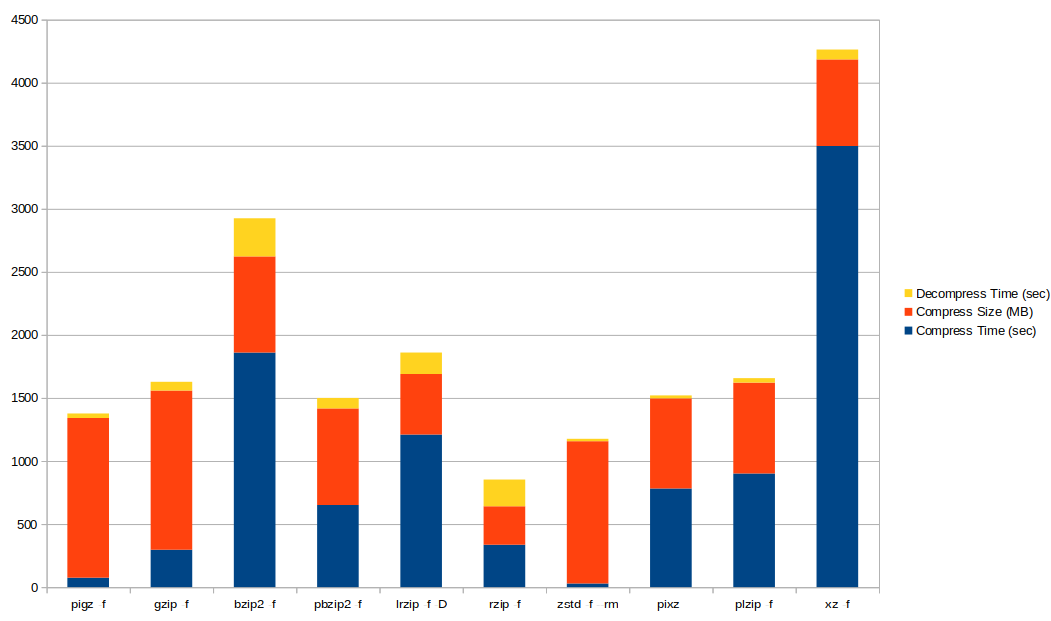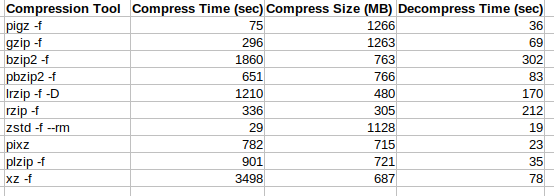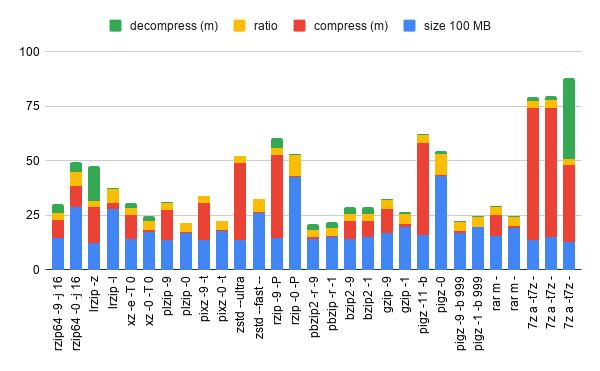I needed to do this, but all the tutorials that I could find are incomplete, or already outdated, such as this.
After hacking around for a while, here’s how to correctly setup OpenVPN server in a container on Proxmox:
(btw if you just need to setup an OpenVPN Server in a normal server / non-container, then just do the “in container” part below)
IN HOST
# create special device "tun" for OpenVPN
mkdir -p /devcontainer/net
mknod /devcontainer/net/tun c 10 200
chown 100000:100000 /devcontainer/net/tun
# enable your container to use that tun device
# change 124 into your container's number : pct list
echo "lxc.mount.entry: /devcontainer/net dev/net none bind,create=dir" >> /etc/pve/lxc/124.conf
# forward OpenVPN traffic to your container's IP address
# change 10.10.60.6 to your container's IP address
iptables -t nat -A PREROUTING -i vmbr0 -p tcp -m tcp --dport 1194 -j DNAT --to-destination 10.10.60.6:1194
iptables -t nat -A PREROUTING -i vmbr0 -p udp -m udp --dport 1194 -j DNAT --to-destination 10.10.60.6:1194
iptables -t nat -A PREROUTING -i vmbr1 -p tcp -m tcp --dport 53 -j DNAT --to-destination 10.10.60.6:53
# save iptables's rule
iptables-save > /etc/iptables.rules
IN CONTAINER
# execute the automated OpenVPN installation script
mkdir /root/scripts
cd /root/scripts
wget git.io/vpn --no-check-certificate -O openvpn-install.sh ; chmod +x openvpn-install.sh ; ./openvpn-install.sh
# if you'd like to change the default 10.8.0.xxx IP address, do this :
# vi openvpn-install.sh
# :%s/10.8.0/10.88.0/g
# setup NAT, so the OpenVPN clients can connect to the internet
# while connected to this OpenVPN server
iptables -I POSTROUTING -t nat -s 10.88.0.0/24 -j MASQUERADE
# save iptables's rule
iptables-save > /etc/iptables.rules
After executing the /root/scripts/openvpn-install.sh script , it will result in a file with ovpn extension
Download that to your computer / client,
install OpenVPN client,
and use that ovpn file as the configuration
Enjoy !
In case that very helpful OpenVPN Server install script suddenly disappear, here it is :
#!/bin/bash
#
# https://github.com/Nyr/openvpn-install
#
# Copyright (c) 2013 Nyr. Released under the MIT License.
# Detect Debian users running the script with "sh" instead of bash
if readlink /proc/$$/exe | grep -q "dash"; then
echo 'This installer needs to be run with "bash", not "sh".'
exit
fi
# Discard stdin. Needed when running from an one-liner which includes a newline
read -N 999999 -t 0.001
# Detect OpenVZ 6
if [[ $(uname -r | cut -d "." -f 1) -eq 2 ]]; then
echo "The system is running an old kernel, which is incompatible with this installer."
exit
fi
# Detect OS
# $os_version variables aren't always in use, but are kept here for convenience
if grep -qs "ubuntu" /etc/os-release; then
os="ubuntu"
os_version=$(grep 'VERSION_ID' /etc/os-release | cut -d '"' -f 2 | tr -d '.')
group_name="nogroup"
elif [[ -e /etc/debian_version ]]; then
os="debian"
os_version=$(grep -oE '[0-9]+' /etc/debian_version | head -1)
group_name="nogroup"
elif [[ -e /etc/centos-release ]]; then
os="centos"
os_version=$(grep -oE '[0-9]+' /etc/centos-release | head -1)
group_name="nobody"
elif [[ -e /etc/fedora-release ]]; then
os="fedora"
os_version=$(grep -oE '[0-9]+' /etc/fedora-release | head -1)
group_name="nobody"
else
echo "This installer seems to be running on an unsupported distribution.
Supported distributions are Ubuntu, Debian, CentOS, and Fedora."
exit
fi
if [[ "$os" == "ubuntu" && "$os_version" -lt 1804 ]]; then
echo "Ubuntu 18.04 or higher is required to use this installer.
This version of Ubuntu is too old and unsupported."
exit
fi
if [[ "$os" == "debian" && "$os_version" -lt 9 ]]; then
echo "Debian 9 or higher is required to use this installer.
This version of Debian is too old and unsupported."
exit
fi
if [[ "$os" == "centos" && "$os_version" -lt 7 ]]; then
echo "CentOS 7 or higher is required to use this installer.
This version of CentOS is too old and unsupported."
exit
fi
# Detect environments where $PATH does not include the sbin directories
if ! grep -q sbin <<< "$PATH"; then
echo '$PATH does not include sbin. Try using "su -" instead of "su".'
exit
fi
if [[ "$EUID" -ne 0 ]]; then
echo "This installer needs to be run with superuser privileges."
exit
fi
if [[ ! -e /dev/net/tun ]] || ! ( exec 7<>/dev/net/tun ) 2>/dev/null; then
echo "The system does not have the TUN device available.
TUN needs to be enabled before running this installer."
exit
fi
new_client () {
# Generates the custom client.ovpn
{
cat /etc/openvpn/server/client-common.txt
echo "<ca>"
cat /etc/openvpn/server/easy-rsa/pki/ca.crt
echo "</ca>"
echo "<cert>"
sed -ne '/BEGIN CERTIFICATE/,$ p' /etc/openvpn/server/easy-rsa/pki/issued/"$client".crt
echo "</cert>"
echo "<key>"
cat /etc/openvpn/server/easy-rsa/pki/private/"$client".key
echo "</key>"
echo "<tls-crypt>"
sed -ne '/BEGIN OpenVPN Static key/,$ p' /etc/openvpn/server/tc.key
echo "</tls-crypt>"
} > ~/"$client".ovpn
}
if [[ ! -e /etc/openvpn/server/server.conf ]]; then
clear
echo 'Welcome to this OpenVPN road warrior installer!'
# If system has a single IPv4, it is selected automatically. Else, ask the user
if [[ $(ip -4 addr | grep inet | grep -vEc '127(\.[0-9]{1,3}){3}') -eq 1 ]]; then
ip=$(ip -4 addr | grep inet | grep -vE '127(\.[0-9]{1,3}){3}' | cut -d '/' -f 1 | grep -oE '[0-9]{1,3}(\.[0-9]{1,3}){3}')
else
number_of_ip=$(ip -4 addr | grep inet | grep -vEc '127(\.[0-9]{1,3}){3}')
echo
echo "Which IPv4 address should be used?"
ip -4 addr | grep inet | grep -vE '127(\.[0-9]{1,3}){3}' | cut -d '/' -f 1 | grep -oE '[0-9]{1,3}(\.[0-9]{1,3}){3}' | nl -s ') '
read -p "IPv4 address [1]: " ip_number
until [[ -z "$ip_number" || "$ip_number" =~ ^[0-9]+$ && "$ip_number" -le "$number_of_ip" ]]; do
echo "$ip_number: invalid selection."
read -p "IPv4 address [1]: " ip_number
done
[[ -z "$ip_number" ]] && ip_number="1"
ip=$(ip -4 addr | grep inet | grep -vE '127(\.[0-9]{1,3}){3}' | cut -d '/' -f 1 | grep -oE '[0-9]{1,3}(\.[0-9]{1,3}){3}' | sed -n "$ip_number"p)
fi
# If $ip is a private IP address, the server must be behind NAT
if echo "$ip" | grep -qE '^(10\.|172\.1[6789]\.|172\.2[0-9]\.|172\.3[01]\.|192\.168)'; then
echo
echo "This server is behind NAT. What is the public IPv4 address or hostname?"
# Get public IP and sanitize with grep
get_public_ip=$(grep -m 1 -oE '^[0-9]{1,3}(\.[0-9]{1,3}){3}$' <<< "$(wget -T 10 -t 1 -4qO- "http://ip1.dynupdate.no-ip.com/" || curl -m 10 -4Ls "http://ip1.dynupdate.no-ip.com/")")
read -p "Public IPv4 address / hostname [$get_public_ip]: " public_ip
# If the checkip service is unavailable and user didn't provide input, ask again
until [[ -n "$get_public_ip" || -n "$public_ip" ]]; do
echo "Invalid input."
read -p "Public IPv4 address / hostname: " public_ip
done
[[ -z "$public_ip" ]] && public_ip="$get_public_ip"
fi
# If system has a single IPv6, it is selected automatically
if [[ $(ip -6 addr | grep -c 'inet6 [23]') -eq 1 ]]; then
ip6=$(ip -6 addr | grep 'inet6 [23]' | cut -d '/' -f 1 | grep -oE '([0-9a-fA-F]{0,4}:){1,7}[0-9a-fA-F]{0,4}')
fi
# If system has multiple IPv6, ask the user to select one
if [[ $(ip -6 addr | grep -c 'inet6 [23]') -gt 1 ]]; then
number_of_ip6=$(ip -6 addr | grep -c 'inet6 [23]')
echo
echo "Which IPv6 address should be used?"
ip -6 addr | grep 'inet6 [23]' | cut -d '/' -f 1 | grep -oE '([0-9a-fA-F]{0,4}:){1,7}[0-9a-fA-F]{0,4}' | nl -s ') '
read -p "IPv6 address [1]: " ip6_number
until [[ -z "$ip6_number" || "$ip6_number" =~ ^[0-9]+$ && "$ip6_number" -le "$number_of_ip6" ]]; do
echo "$ip6_number: invalid selection."
read -p "IPv6 address [1]: " ip6_number
done
[[ -z "$ip6_number" ]] && ip6_number="1"
ip6=$(ip -6 addr | grep 'inet6 [23]' | cut -d '/' -f 1 | grep -oE '([0-9a-fA-F]{0,4}:){1,7}[0-9a-fA-F]{0,4}' | sed -n "$ip6_number"p)
fi
echo
echo "Which protocol should OpenVPN use?"
echo " 1) UDP (recommended)"
echo " 2) TCP"
read -p "Protocol [1]: " protocol
until [[ -z "$protocol" || "$protocol" =~ ^[12]$ ]]; do
echo "$protocol: invalid selection."
read -p "Protocol [1]: " protocol
done
case "$protocol" in
1|"")
protocol=udp
;;
2)
protocol=tcp
;;
esac
echo
echo "What port should OpenVPN listen to?"
read -p "Port [1194]: " port
until [[ -z "$port" || "$port" =~ ^[0-9]+$ && "$port" -le 65535 ]]; do
echo "$port: invalid port."
read -p "Port [1194]: " port
done
[[ -z "$port" ]] && port="1194"
echo
echo "Select a DNS server for the clients:"
echo " 1) Current system resolvers"
echo " 2) Google"
echo " 3) 1.1.1.1"
echo " 4) OpenDNS"
echo " 5) Quad9"
echo " 6) AdGuard"
read -p "DNS server [1]: " dns
until [[ -z "$dns" || "$dns" =~ ^[1-6]$ ]]; do
echo "$dns: invalid selection."
read -p "DNS server [1]: " dns
done
echo
echo "Enter a name for the first client:"
read -p "Name [client]: " unsanitized_client
# Allow a limited set of characters to avoid conflicts
client=$(sed 's/[^0123456789abcdefghijklmnopqrstuvwxyzABCDEFGHIJKLMNOPQRSTUVWXYZ_-]/_/g' <<< "$unsanitized_client")
[[ -z "$client" ]] && client="client"
echo
echo "OpenVPN installation is ready to begin."
# Install a firewall in the rare case where one is not already available
if ! systemctl is-active --quiet firewalld.service && ! hash iptables 2>/dev/null; then
if [[ "$os" == "centos" || "$os" == "fedora" ]]; then
firewall="firewalld"
# We don't want to silently enable firewalld, so we give a subtle warning
# If the user continues, firewalld will be installed and enabled during setup
echo "firewalld, which is required to manage routing tables, will also be installed."
elif [[ "$os" == "debian" || "$os" == "ubuntu" ]]; then
# iptables is way less invasive than firewalld so no warning is given
firewall="iptables"
fi
fi
read -n1 -r -p "Press any key to continue..."
# If running inside a container, disable LimitNPROC to prevent conflicts
if systemd-detect-virt -cq; then
mkdir /etc/systemd/system/openvpn-server@server.service.d/ 2>/dev/null
echo "[Service]
LimitNPROC=infinity" > /etc/systemd/system/openvpn-server@server.service.d/disable-limitnproc.conf
fi
if [[ "$os" = "debian" || "$os" = "ubuntu" ]]; then
apt-get update
apt-get install -y openvpn openssl ca-certificates $firewall
elif [[ "$os" = "centos" ]]; then
yum install -y epel-release
yum install -y openvpn openssl ca-certificates tar $firewall
else
# Else, OS must be Fedora
dnf install -y openvpn openssl ca-certificates tar $firewall
fi
# If firewalld was just installed, enable it
if [[ "$firewall" == "firewalld" ]]; then
systemctl enable --now firewalld.service
fi
# Get easy-rsa
easy_rsa_url='https://github.com/OpenVPN/easy-rsa/releases/download/v3.0.8/EasyRSA-3.0.8.tgz'
mkdir -p /etc/openvpn/server/easy-rsa/
{ wget -qO- "$easy_rsa_url" 2>/dev/null || curl -sL "$easy_rsa_url" ; } | tar xz -C /etc/openvpn/server/easy-rsa/ --strip-components 1
chown -R root:root /etc/openvpn/server/easy-rsa/
cd /etc/openvpn/server/easy-rsa/
# Create the PKI, set up the CA and the server and client certificates
./easyrsa init-pki
./easyrsa --batch build-ca nopass
EASYRSA_CERT_EXPIRE=3650 ./easyrsa build-server-full server nopass
EASYRSA_CERT_EXPIRE=3650 ./easyrsa build-client-full "$client" nopass
EASYRSA_CRL_DAYS=3650 ./easyrsa gen-crl
# Move the stuff we need
cp pki/ca.crt pki/private/ca.key pki/issued/server.crt pki/private/server.key pki/crl.pem /etc/openvpn/server
# CRL is read with each client connection, while OpenVPN is dropped to nobody
chown nobody:"$group_name" /etc/openvpn/server/crl.pem
# Without +x in the directory, OpenVPN can't run a stat() on the CRL file
chmod o+x /etc/openvpn/server/
# Generate key for tls-crypt
openvpn --genkey --secret /etc/openvpn/server/tc.key
# Create the DH parameters file using the predefined ffdhe2048 group
echo '-----BEGIN DH PARAMETERS-----
MIIBCAKCAQEA//////////+t+FRYortKmq/cViAnPTzx2LnFg84tNpWp4TZBFGQz
+8yTnc4kmz75fS/jY2MMddj2gbICrsRhetPfHtXV/WVhJDP1H18GbtCFY2VVPe0a
87VXE15/V8k1mE8McODmi3fipona8+/och3xWKE2rec1MKzKT0g6eXq8CrGCsyT7
YdEIqUuyyOP7uWrat2DX9GgdT0Kj3jlN9K5W7edjcrsZCwenyO4KbXCeAvzhzffi
7MA0BM0oNC9hkXL+nOmFg/+OTxIy7vKBg8P+OxtMb61zO7X8vC7CIAXFjvGDfRaD
ssbzSibBsu/6iGtCOGEoXJf//////////wIBAg==
-----END DH PARAMETERS-----' > /etc/openvpn/server/dh.pem
# Generate server.conf
echo "local $ip
port $port
proto $protocol
dev tun
ca ca.crt
cert server.crt
key server.key
dh dh.pem
auth SHA512
tls-crypt tc.key
topology subnet
server 10.8.0.0 255.255.255.0" > /etc/openvpn/server/server.conf
# IPv6
if [[ -z "$ip6" ]]; then
echo 'push "redirect-gateway def1 bypass-dhcp"' >> /etc/openvpn/server/server.conf
else
echo 'server-ipv6 fddd:1194:1194:1194::/64' >> /etc/openvpn/server/server.conf
echo 'push "redirect-gateway def1 ipv6 bypass-dhcp"' >> /etc/openvpn/server/server.conf
fi
echo 'ifconfig-pool-persist ipp.txt' >> /etc/openvpn/server/server.conf
# DNS
case "$dns" in
1|"")
# Locate the proper resolv.conf
# Needed for systems running systemd-resolved
if grep -q '^nameserver 127.0.0.53' "/etc/resolv.conf"; then
resolv_conf="/run/systemd/resolve/resolv.conf"
else
resolv_conf="/etc/resolv.conf"
fi
# Obtain the resolvers from resolv.conf and use them for OpenVPN
grep -v '^#\|^;' "$resolv_conf" | grep '^nameserver' | grep -oE '[0-9]{1,3}(\.[0-9]{1,3}){3}' | while read line; do
echo "push \"dhcp-option DNS $line\"" >> /etc/openvpn/server/server.conf
done
;;
2)
echo 'push "dhcp-option DNS 8.8.8.8"' >> /etc/openvpn/server/server.conf
echo 'push "dhcp-option DNS 8.8.4.4"' >> /etc/openvpn/server/server.conf
;;
3)
echo 'push "dhcp-option DNS 1.1.1.1"' >> /etc/openvpn/server/server.conf
echo 'push "dhcp-option DNS 1.0.0.1"' >> /etc/openvpn/server/server.conf
;;
4)
echo 'push "dhcp-option DNS 208.67.222.222"' >> /etc/openvpn/server/server.conf
echo 'push "dhcp-option DNS 208.67.220.220"' >> /etc/openvpn/server/server.conf
;;
5)
echo 'push "dhcp-option DNS 9.9.9.9"' >> /etc/openvpn/server/server.conf
echo 'push "dhcp-option DNS 149.112.112.112"' >> /etc/openvpn/server/server.conf
;;
6)
echo 'push "dhcp-option DNS 94.140.14.14"' >> /etc/openvpn/server/server.conf
echo 'push "dhcp-option DNS 94.140.15.15"' >> /etc/openvpn/server/server.conf
;;
esac
echo "keepalive 10 120
cipher AES-256-CBC
user nobody
group $group_name
persist-key
persist-tun
status openvpn-status.log
verb 3
crl-verify crl.pem" >> /etc/openvpn/server/server.conf
if [[ "$protocol" = "udp" ]]; then
echo "explicit-exit-notify" >> /etc/openvpn/server/server.conf
fi
# Enable net.ipv4.ip_forward for the system
echo 'net.ipv4.ip_forward=1' > /etc/sysctl.d/30-openvpn-forward.conf
# Enable without waiting for a reboot or service restart
echo 1 > /proc/sys/net/ipv4/ip_forward
if [[ -n "$ip6" ]]; then
# Enable net.ipv6.conf.all.forwarding for the system
echo "net.ipv6.conf.all.forwarding=1" >> /etc/sysctl.d/30-openvpn-forward.conf
# Enable without waiting for a reboot or service restart
echo 1 > /proc/sys/net/ipv6/conf/all/forwarding
fi
if systemctl is-active --quiet firewalld.service; then
# Using both permanent and not permanent rules to avoid a firewalld
# reload.
# We don't use --add-service=openvpn because that would only work with
# the default port and protocol.
firewall-cmd --add-port="$port"/"$protocol"
firewall-cmd --zone=trusted --add-source=10.8.0.0/24
firewall-cmd --permanent --add-port="$port"/"$protocol"
firewall-cmd --permanent --zone=trusted --add-source=10.8.0.0/24
# Set NAT for the VPN subnet
firewall-cmd --direct --add-rule ipv4 nat POSTROUTING 0 -s 10.8.0.0/24 ! -d 10.8.0.0/24 -j SNAT --to "$ip"
firewall-cmd --permanent --direct --add-rule ipv4 nat POSTROUTING 0 -s 10.8.0.0/24 ! -d 10.8.0.0/24 -j SNAT --to "$ip"
if [[ -n "$ip6" ]]; then
firewall-cmd --zone=trusted --add-source=fddd:1194:1194:1194::/64
firewall-cmd --permanent --zone=trusted --add-source=fddd:1194:1194:1194::/64
firewall-cmd --direct --add-rule ipv6 nat POSTROUTING 0 -s fddd:1194:1194:1194::/64 ! -d fddd:1194:1194:1194::/64 -j SNAT --to "$ip6"
firewall-cmd --permanent --direct --add-rule ipv6 nat POSTROUTING 0 -s fddd:1194:1194:1194::/64 ! -d fddd:1194:1194:1194::/64 -j SNAT --to "$ip6"
fi
else
# Create a service to set up persistent iptables rules
iptables_path=$(command -v iptables)
ip6tables_path=$(command -v ip6tables)
# nf_tables is not available as standard in OVZ kernels. So use iptables-legacy
# if we are in OVZ, with a nf_tables backend and iptables-legacy is available.
if [[ $(systemd-detect-virt) == "openvz" ]] && readlink -f "$(command -v iptables)" | grep -q "nft" && hash iptables-legacy 2>/dev/null; then
iptables_path=$(command -v iptables-legacy)
ip6tables_path=$(command -v ip6tables-legacy)
fi
echo "[Unit]
Before=network.target
[Service]
Type=oneshot
ExecStart=$iptables_path -t nat -A POSTROUTING -s 10.8.0.0/24 ! -d 10.8.0.0/24 -j SNAT --to $ip
ExecStart=$iptables_path -I INPUT -p $protocol --dport $port -j ACCEPT
ExecStart=$iptables_path -I FORWARD -s 10.8.0.0/24 -j ACCEPT
ExecStart=$iptables_path -I FORWARD -m state --state RELATED,ESTABLISHED -j ACCEPT
ExecStop=$iptables_path -t nat -D POSTROUTING -s 10.8.0.0/24 ! -d 10.8.0.0/24 -j SNAT --to $ip
ExecStop=$iptables_path -D INPUT -p $protocol --dport $port -j ACCEPT
ExecStop=$iptables_path -D FORWARD -s 10.8.0.0/24 -j ACCEPT
ExecStop=$iptables_path -D FORWARD -m state --state RELATED,ESTABLISHED -j ACCEPT" > /etc/systemd/system/openvpn-iptables.service
if [[ -n "$ip6" ]]; then
echo "ExecStart=$ip6tables_path -t nat -A POSTROUTING -s fddd:1194:1194:1194::/64 ! -d fddd:1194:1194:1194::/64 -j SNAT --to $ip6
ExecStart=$ip6tables_path -I FORWARD -s fddd:1194:1194:1194::/64 -j ACCEPT
ExecStart=$ip6tables_path -I FORWARD -m state --state RELATED,ESTABLISHED -j ACCEPT
ExecStop=$ip6tables_path -t nat -D POSTROUTING -s fddd:1194:1194:1194::/64 ! -d fddd:1194:1194:1194::/64 -j SNAT --to $ip6
ExecStop=$ip6tables_path -D FORWARD -s fddd:1194:1194:1194::/64 -j ACCEPT
ExecStop=$ip6tables_path -D FORWARD -m state --state RELATED,ESTABLISHED -j ACCEPT" >> /etc/systemd/system/openvpn-iptables.service
fi
echo "RemainAfterExit=yes
[Install]
WantedBy=multi-user.target" >> /etc/systemd/system/openvpn-iptables.service
systemctl enable --now openvpn-iptables.service
fi
# If SELinux is enabled and a custom port was selected, we need this
if sestatus 2>/dev/null | grep "Current mode" | grep -q "enforcing" && [[ "$port" != 1194 ]]; then
# Install semanage if not already present
if ! hash semanage 2>/dev/null; then
if [[ "$os_version" -eq 7 ]]; then
# Centos 7
yum install -y policycoreutils-python
else
# CentOS 8 or Fedora
dnf install -y policycoreutils-python-utils
fi
fi
semanage port -a -t openvpn_port_t -p "$protocol" "$port"
fi
# If the server is behind NAT, use the correct IP address
[[ -n "$public_ip" ]] && ip="$public_ip"
# client-common.txt is created so we have a template to add further users later
echo "client
dev tun
proto $protocol
remote $ip $port
resolv-retry infinite
nobind
persist-key
persist-tun
remote-cert-tls server
auth SHA512
cipher AES-256-CBC
ignore-unknown-option block-outside-dns
block-outside-dns
verb 3" > /etc/openvpn/server/client-common.txt
# Enable and start the OpenVPN service
systemctl enable --now openvpn-server@server.service
# Generates the custom client.ovpn
new_client
echo
echo "Finished!"
echo
echo "The client configuration is available in:" ~/"$client.ovpn"
echo "New clients can be added by running this script again."
else
clear
echo "OpenVPN is already installed."
echo
echo "Select an option:"
echo " 1) Add a new client"
echo " 2) Revoke an existing client"
echo " 3) Remove OpenVPN"
echo " 4) Exit"
read -p "Option: " option
until [[ "$option" =~ ^[1-4]$ ]]; do
echo "$option: invalid selection."
read -p "Option: " option
done
case "$option" in
1)
echo
echo "Provide a name for the client:"
read -p "Name: " unsanitized_client
client=$(sed 's/[^0123456789abcdefghijklmnopqrstuvwxyzABCDEFGHIJKLMNOPQRSTUVWXYZ_-]/_/g' <<< "$unsanitized_client")
while [[ -z "$client" || -e /etc/openvpn/server/easy-rsa/pki/issued/"$client".crt ]]; do
echo "$client: invalid name."
read -p "Name: " unsanitized_client
client=$(sed 's/[^0123456789abcdefghijklmnopqrstuvwxyzABCDEFGHIJKLMNOPQRSTUVWXYZ_-]/_/g' <<< "$unsanitized_client")
done
cd /etc/openvpn/server/easy-rsa/
EASYRSA_CERT_EXPIRE=3650 ./easyrsa build-client-full "$client" nopass
# Generates the custom client.ovpn
new_client
echo
echo "$client added. Configuration available in:" ~/"$client.ovpn"
exit
;;
2)
# This option could be documented a bit better and maybe even be simplified
# ...but what can I say, I want some sleep too
number_of_clients=$(tail -n +2 /etc/openvpn/server/easy-rsa/pki/index.txt | grep -c "^V")
if [[ "$number_of_clients" = 0 ]]; then
echo
echo "There are no existing clients!"
exit
fi
echo
echo "Select the client to revoke:"
tail -n +2 /etc/openvpn/server/easy-rsa/pki/index.txt | grep "^V" | cut -d '=' -f 2 | nl -s ') '
read -p "Client: " client_number
until [[ "$client_number" =~ ^[0-9]+$ && "$client_number" -le "$number_of_clients" ]]; do
echo "$client_number: invalid selection."
read -p "Client: " client_number
done
client=$(tail -n +2 /etc/openvpn/server/easy-rsa/pki/index.txt | grep "^V" | cut -d '=' -f 2 | sed -n "$client_number"p)
echo
read -p "Confirm $client revocation? [y/N]: " revoke
until [[ "$revoke" =~ ^[yYnN]*$ ]]; do
echo "$revoke: invalid selection."
read -p "Confirm $client revocation? [y/N]: " revoke
done
if [[ "$revoke" =~ ^[yY]$ ]]; then
cd /etc/openvpn/server/easy-rsa/
./easyrsa --batch revoke "$client"
EASYRSA_CRL_DAYS=3650 ./easyrsa gen-crl
rm -f /etc/openvpn/server/crl.pem
cp /etc/openvpn/server/easy-rsa/pki/crl.pem /etc/openvpn/server/crl.pem
# CRL is read with each client connection, when OpenVPN is dropped to nobody
chown nobody:"$group_name" /etc/openvpn/server/crl.pem
echo
echo "$client revoked!"
else
echo
echo "$client revocation aborted!"
fi
exit
;;
3)
echo
read -p "Confirm OpenVPN removal? [y/N]: " remove
until [[ "$remove" =~ ^[yYnN]*$ ]]; do
echo "$remove: invalid selection."
read -p "Confirm OpenVPN removal? [y/N]: " remove
done
if [[ "$remove" =~ ^[yY]$ ]]; then
port=$(grep '^port ' /etc/openvpn/server/server.conf | cut -d " " -f 2)
protocol=$(grep '^proto ' /etc/openvpn/server/server.conf | cut -d " " -f 2)
if systemctl is-active --quiet firewalld.service; then
ip=$(firewall-cmd --direct --get-rules ipv4 nat POSTROUTING | grep '\-s 10.8.0.0/24 '"'"'!'"'"' -d 10.8.0.0/24' | grep -oE '[^ ]+$')
# Using both permanent and not permanent rules to avoid a firewalld reload.
firewall-cmd --remove-port="$port"/"$protocol"
firewall-cmd --zone=trusted --remove-source=10.8.0.0/24
firewall-cmd --permanent --remove-port="$port"/"$protocol"
firewall-cmd --permanent --zone=trusted --remove-source=10.8.0.0/24
firewall-cmd --direct --remove-rule ipv4 nat POSTROUTING 0 -s 10.8.0.0/24 ! -d 10.8.0.0/24 -j SNAT --to "$ip"
firewall-cmd --permanent --direct --remove-rule ipv4 nat POSTROUTING 0 -s 10.8.0.0/24 ! -d 10.8.0.0/24 -j SNAT --to "$ip"
if grep -qs "server-ipv6" /etc/openvpn/server/server.conf; then
ip6=$(firewall-cmd --direct --get-rules ipv6 nat POSTROUTING | grep '\-s fddd:1194:1194:1194::/64 '"'"'!'"'"' -d fddd:1194:1194:1194::/64' | grep -oE '[^ ]+$')
firewall-cmd --zone=trusted --remove-source=fddd:1194:1194:1194::/64
firewall-cmd --permanent --zone=trusted --remove-source=fddd:1194:1194:1194::/64
firewall-cmd --direct --remove-rule ipv6 nat POSTROUTING 0 -s fddd:1194:1194:1194::/64 ! -d fddd:1194:1194:1194::/64 -j SNAT --to "$ip6"
firewall-cmd --permanent --direct --remove-rule ipv6 nat POSTROUTING 0 -s fddd:1194:1194:1194::/64 ! -d fddd:1194:1194:1194::/64 -j SNAT --to "$ip6"
fi
else
systemctl disable --now openvpn-iptables.service
rm -f /etc/systemd/system/openvpn-iptables.service
fi
if sestatus 2>/dev/null | grep "Current mode" | grep -q "enforcing" && [[ "$port" != 1194 ]]; then
semanage port -d -t openvpn_port_t -p "$protocol" "$port"
fi
systemctl disable --now openvpn-server@server.service
rm -rf /etc/openvpn/server
rm -f /etc/systemd/system/openvpn-server@server.service.d/disable-limitnproc.conf
rm -f /etc/sysctl.d/30-openvpn-forward.conf
if [[ "$os" = "debian" || "$os" = "ubuntu" ]]; then
apt-get remove --purge -y openvpn
else
# Else, OS must be CentOS or Fedora
yum remove -y openvpn
fi
echo
echo "OpenVPN removed!"
else
echo
echo "OpenVPN removal aborted!"
fi
exit
;;
4)
exit
;;
esac
fi



































 Linus Torvalds
Linus Torvalds